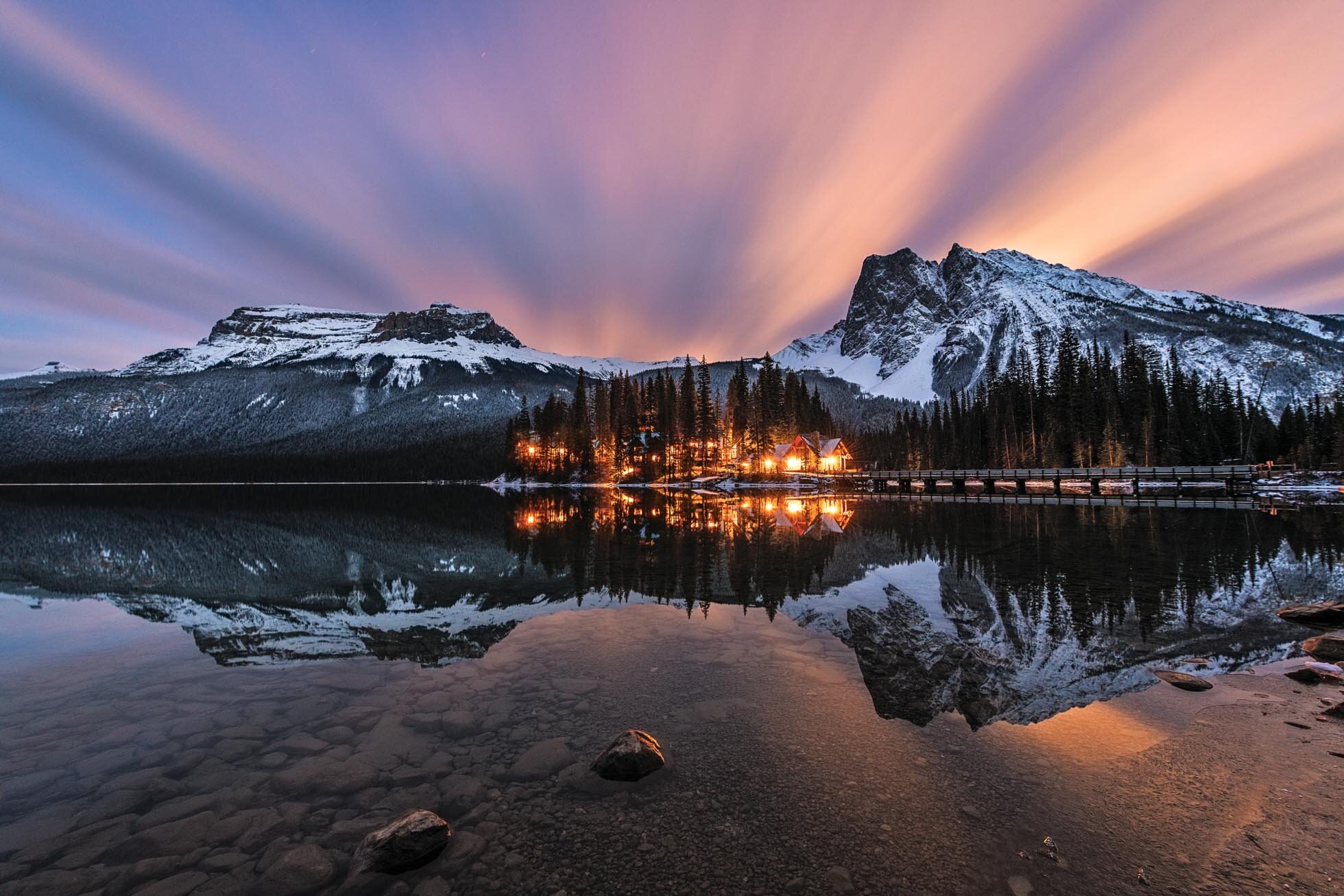In my last post, I shared 5 tips for capturing beautiful reflections in landscape imagery. Some of my very favorite landscape images are ones that include reflections. For that reason, I wanted to share some more tips with you this week!
1) Create Symmetry - In landscape photography, it is often recommended to avoid a centered horizon in creating a strong composition. However, when capturing reflections, a centered horizon can be a great choice for composing an image with beautiful symmetry. This is especially the case with a simple scene that isolates the subject and its reflection. When the top and bottom of the scene appear identically, the centered horizon yields a pleasing sense of balance in the frame.
A minimal scene of clouds and trees reflecting in Emerald Lake.
An example of a more complex scene with multiple elements that are mirrored in the waters of Emerald Lake.
2) Think Abstract - Sometimes a reflection can lend itself well to an abstract. Fill the frame with subjects with interesting textures, lines or repetitive shapes.
This image is a scene in Jasper National Park at sunrise. I was drawn to the textures and repetition of these trees and I used my telephoto lens to create an abstract of just the trees and their reflection.
This abstract captured the reflection of tree trunks in the pond beyond our home as the snow fell last month.
3) Avoid Distractions - As you frame your shot, be aware of distractions that might get in the way of your clear and compelling reflection. This can mean items in the water that distract the eye from the reflection such as algae, rocks or sticks. It is also important to check that your positioning captures the reflection without cutting it off. For example, make sure your trees or mountains are reflected fully without the shoreline cutting off the tops of them.
This scene at Oxbow Bend requires that you watch your position so that the full top of Mt. Moran is reflected in the Snake River below.
In this scene in Grand Teton National Park, I carefully set myself up so that the reflection of the Grand Teton would not be impacted by the rocks in the foreground.
4) Frame your reflection - Look for framing elements to add more depth to your reflection images. However, be aware of tip #3 and don’t cut off the important parts of your reflection. Use the framing elements to add depth but avoid distracting the eye away from the reflection that is your main focal point.
In this image, I wanted to frame Mt. Moran and its reflection in the water below. I was very careful to position myself to comfortably frame the subject and while not cutting off the reflection with the foreground foliage.
5) Ripples are Ok! Generally we look for the clearest reflections and the stillest water. Reflections feel like a mirror when the water is the stillest. But don’t shy away when there are some ripples in the water. They can add some interest to your image and make it unique.
It can be hard to get a clear reflection in the very large Jackson Lake so I was excited to see it on this crisp autumn morning. As you can see, there are ripples in the water but capturing this with a faster shutter speed allowed the ripples to create an interesting texture while still getting a great reflection.
6) Have patience! Sometimes you may visit a spot that often gets reflections but when you arrive the water is full of waves. In some situations, you may be out of luck, but sometimes if you stay long enough, the reflection will appear during breaks in the wind.
On this stormy and windy afternoon, there was just a short window in which I was able to capture the reflection of the mountains in the water.
Hope these tips will help you next time you are out searching for reflections.
Kristen Ryan is an award winning and published landscape and fine art photographer and educator residing in the Midwest suburbs of Chicago. All images are available for purchase in the Fine Art Store or by request. Kristen leads ladies landscape photography retreats in the Tetons, Chicago, and the Canadian Rockies, offers private mentoring and teaches an online landscape photography workshop, The World Around You.




















